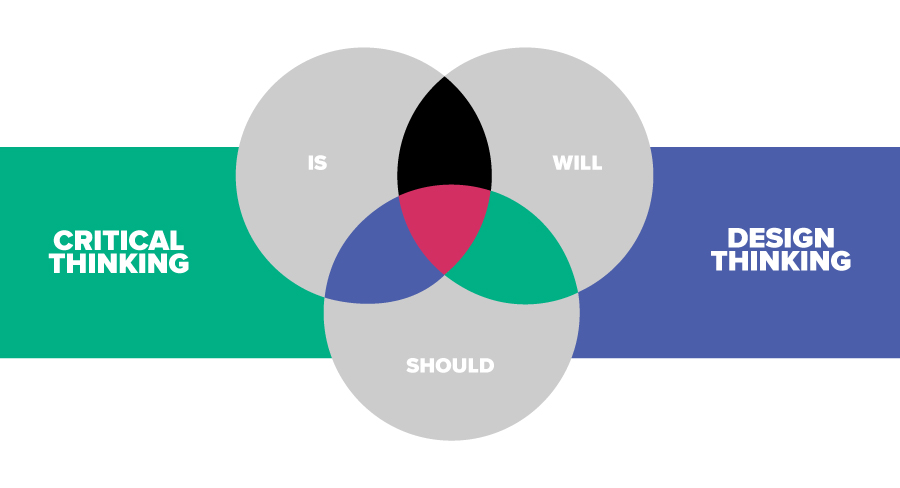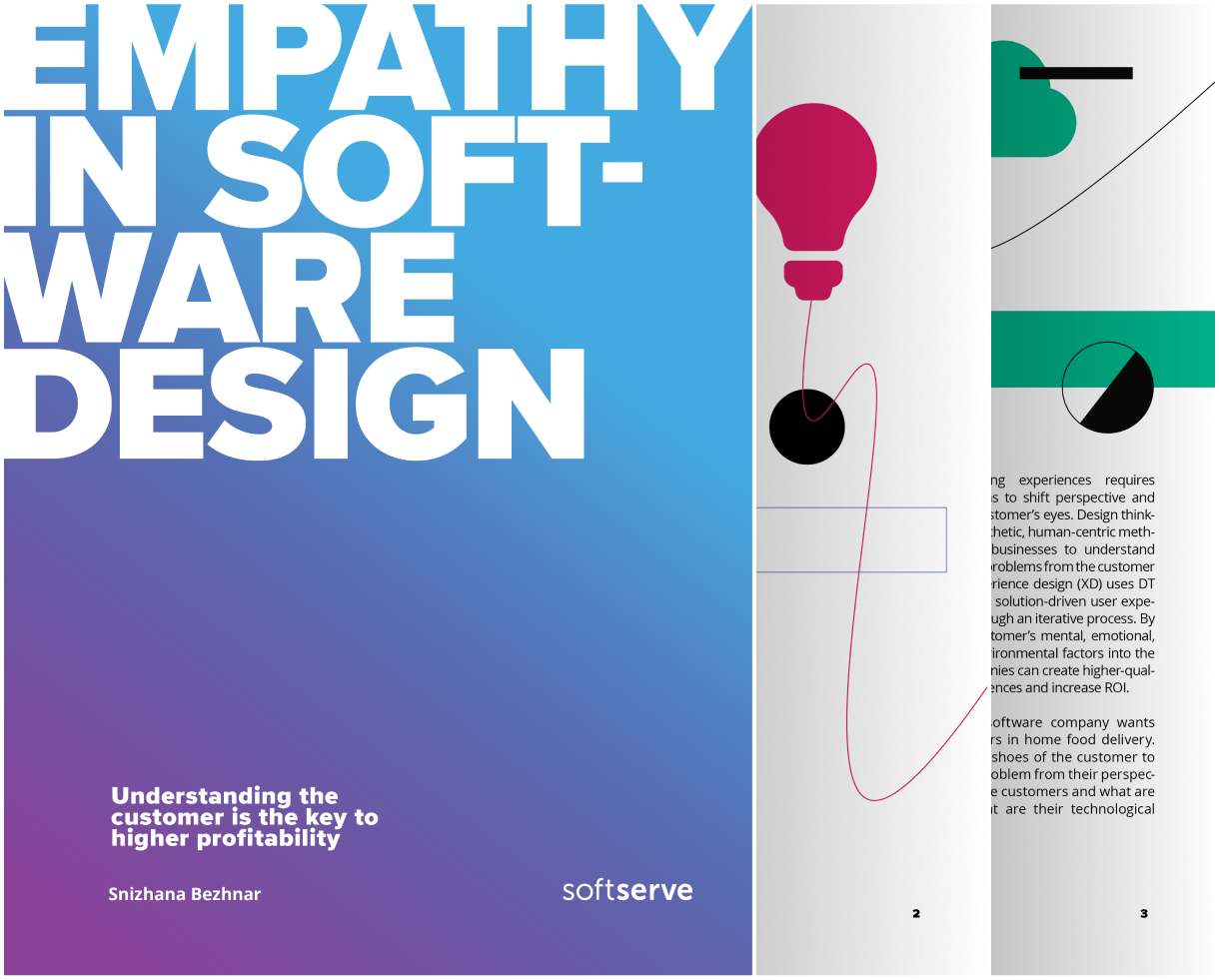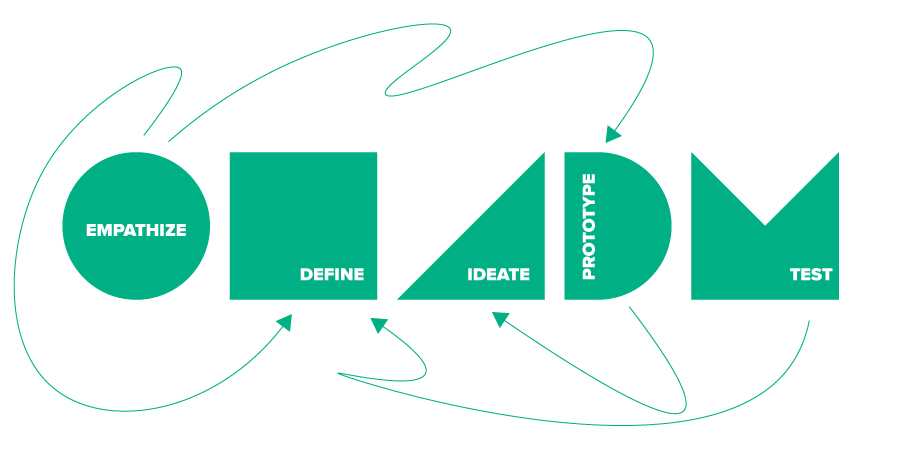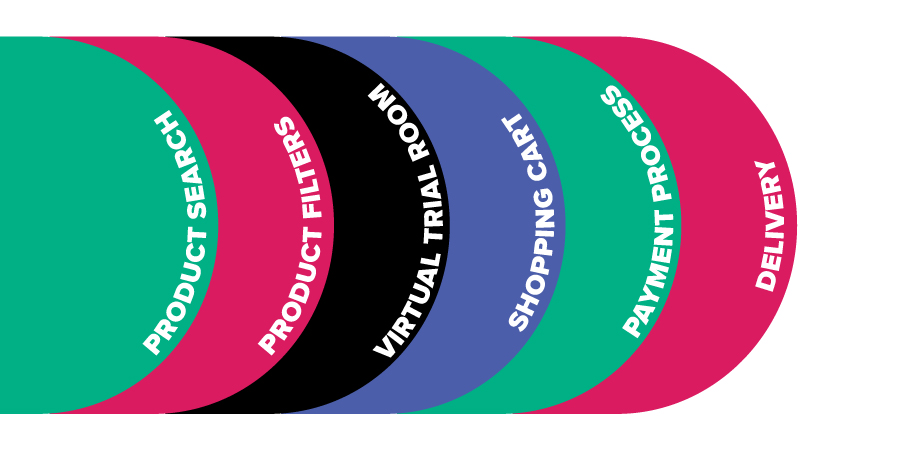
Why Design Thinking Needs Critical Thinking
Customers today don’t choose a brand only for what it sells or how much it costs. What sets companies apart is the experience they create, the way people feel when they interact with a product, a service, or the brand itself.
Designing these experiences is called experience design (XD). It’s about solving problems with people at the center, making sure solutions are not only functional but also intuitive, meaningful, and enjoyable to use.
The method behind this is design thinking (DT), a creative, solution-focused approach. But creativity alone isn’t enough. If DT isn’t supported by facts, data, and diverse perspectives, it risks being biased or disconnected from reality. Pairing DT with critical thinking (CT) ensures that ideas are tested against real evidence and user insights. Together, they give a fuller, more accurate picture of customer needs and expectations.

WHY CRITICAL THINKING MATTERS
Too often, design thinking is driven more by assumptions and personal biases than by real insights. When the people in charge rely mainly on their own ideas, the process loses its balance. What’s missing is critical thinking — the discipline of questioning, testing, and evaluating evidence before moving forward.
Without this balance, design thinking can turn into a brainstorming exercise where every idea sounds good on paper, but few are grounded in reality. Good intentions end up replacing good practices. The PlayPump project in South Africa is a well-known example of how this can happen.

HOW DESIGN THINKING CAN TRANSFORM DYING ORGANIZATIONS
Put your users first and transform experiences. Learn how design thinking can make a real impact in our white paper. Donwload nowCASE STUDY: THE PLAYPUMP
In 2010, a company tried to improve access to clean water in rural South African villages. The idea seemed clever: a “merry-go-round” pump that would deliver water while children played on it. The PlayPump promised two benefits at once — fun for children and a steady water supply — and it received widespread praise and funding.
In reality, the project didn’t work as planned. The designers had overlooked cultural behavior: children weren’t interested in spinning the wheel, and using play as a form of manual labor raised ethical concerns. Many pumps went unused, and villagers often returned to the traditional water pumps.
The PlayPump shows that even well-intentioned design thinking can fail without critical thinking. Cultural, environmental, and ethical factors must be considered at every stage to ensure a solution truly works for the people it’s meant to serve.

HOW CRITICAL THINKING FITS INTO DESIGN THINKING
The five stages of design thinking — empathize, define, ideate, prototype, and test — are well known. Critical thinking is already a part of this process, but its role needs to go beyond the developer’s immediate perspective. To create solutions that truly work, teams must evaluate ideas with an objective, evidence-based mindset and consider context, data, and diverse viewpoints at every stage. Let’s explore how critical thinking applies in each stage.
Empathize
Empathy is the ability to understand and share another person’s thoughts, feelings, and experiences. Achieving it requires more than good intentions — it takes time, research, and careful observation. Critical thinking ensures that insights about users are accurate, complete, and unbiased. Without it, developers may mistake sympathy for true understanding.
In the PlayPump example, designers felt compassion for villagers struggling to access clean water, but they did not truly understand the daily lives, habits, and cultural context of those they were designing for. True empathy requires stepping fully into the users’ perspective, using data and observation to see the world as they see it.
Define
The define stage takes insights gathered during empathy and translates them into a clear, actionable problem statement. Too often, this stage reflects the company’s priorities rather than the end user’s needs. Critical thinking helps ensure the problem statement is genuinely relevant and delivers meaningful value to the people being served.
For PlayPump, the solution framed a cost-effective way to deliver water. Children would pump it while playing, but it did not align with reality. Children were neither inclined nor able to operate the equipment as expected. In the end, this approach drew criticism for being culturally insensitive and ethically questionable. Critical thinking at this stage would have highlighted these potential pitfalls before moving forward.
Ideate
Ideation is the creative stage where teams brainstorm solutions. Critical thinking here ensures ideas are not just new or imaginative, but also feasible and aligned with user needs. Without it, the process can drift into wishful thinking or follow assumptions that were never tested.
With PlayPump, once the idea of using playground equipment as a pump was accepted, the team focused on details like what type of equipment would work best. But there was no pause to question the fundamental viability of the concept itself. Critical thinking helps teams stay grounded in reality while still encouraging creativity, ensuring that innovation is practical as well as imaginative.
Prototype
Prototyping allows teams to test ideas on a small scale before full implementation. Critical thinking ensures prototypes are built and evaluated with real-world context in mind. This involves collaboration across departments and engagement with small groups of actual users or stakeholders. Feedback is used to refine the solution, uncover challenges, and define constraints.
In the PlayPump case, villagers and experts with cultural knowledge were not involved in prototype testing. As a result, the design failed to meet the real needs of the community. A critical-thinking approach during prototyping would have highlighted these gaps early, enabling improvements or even rejection of the flawed concept before full rollout.
Test
The testing stage is iterative, and critical thinking is essential to its effectiveness. Testing involves observing how users interact with the solution, analyzing their behavior, and understanding their experiences. Insights gathered here inform refinements and sometimes require returning to earlier stages — redefining problems, revisiting prototypes, or rethinking ideas.
For PlayPump, testing was insufficient or misdirected. When critical thinking drives testing, teams can learn what actually works and what doesn’t, adjusting the solution based on real evidence rather than assumptions. This continuous cycle strengthens empathy and ensures the final solution truly addresses user needs.

THE VALUE OF COMBINING CREATIVITY WITH EVIDENCE
Critical thinking doesn’t limit creativity. In fact, it enhances it. By combining imagination with careful analysis and diverse perspectives, teams create solutions that are both innovative and practical. When multiple viewpoints are considered, designs become more resilient, relevant, and effective.
This approach is sometimes called Value Stream Thinking (VST). It merges objective evaluation with solution-focused design, ensuring that every step of the process is human-centered and collaborative. VST provides a framework for creating experiences that truly meet users’ needs from start to finish.
SoftServe helps organizations integrate design thinking and critical thinking into their processes. Our teams guide adoption, support integration, and deliver real problem-solving through a human-centered approach.
For decades, we’ve used this approach to work with Fortune 500 companies and businesses across many industries. We take time to understand your business, the broader market, and the trends shaping the future. From there, we build solutions to keep you relevant to your customers and achieve long-term success.
Start a conversation with us
